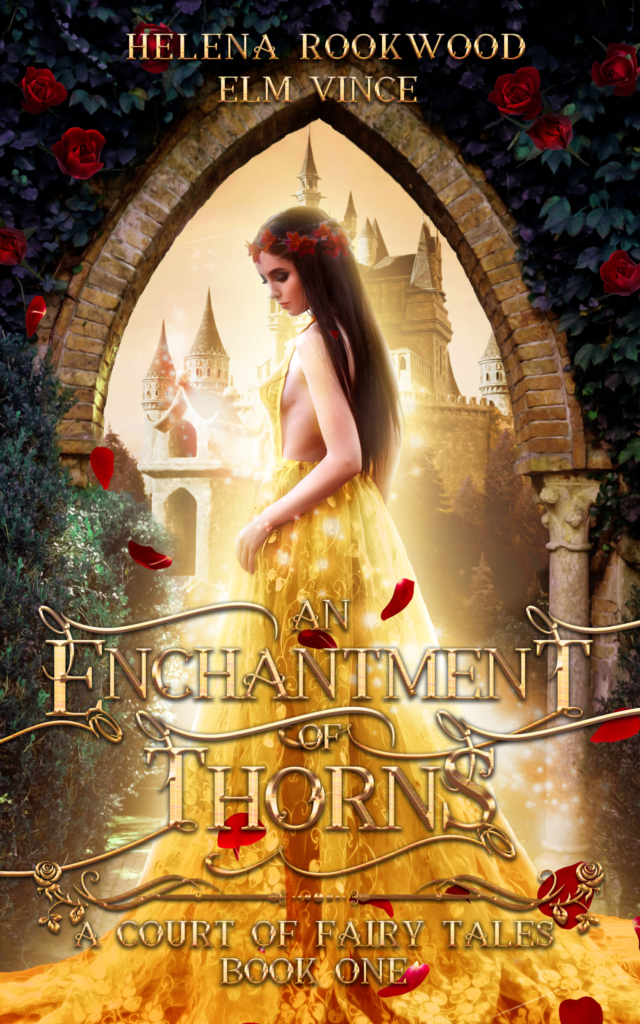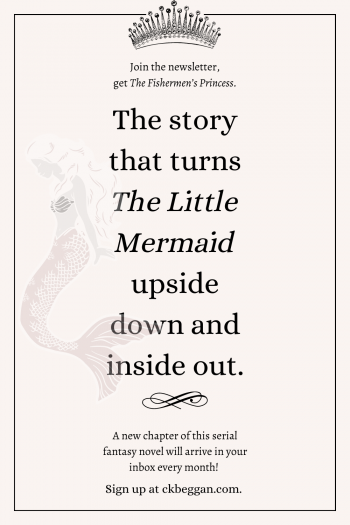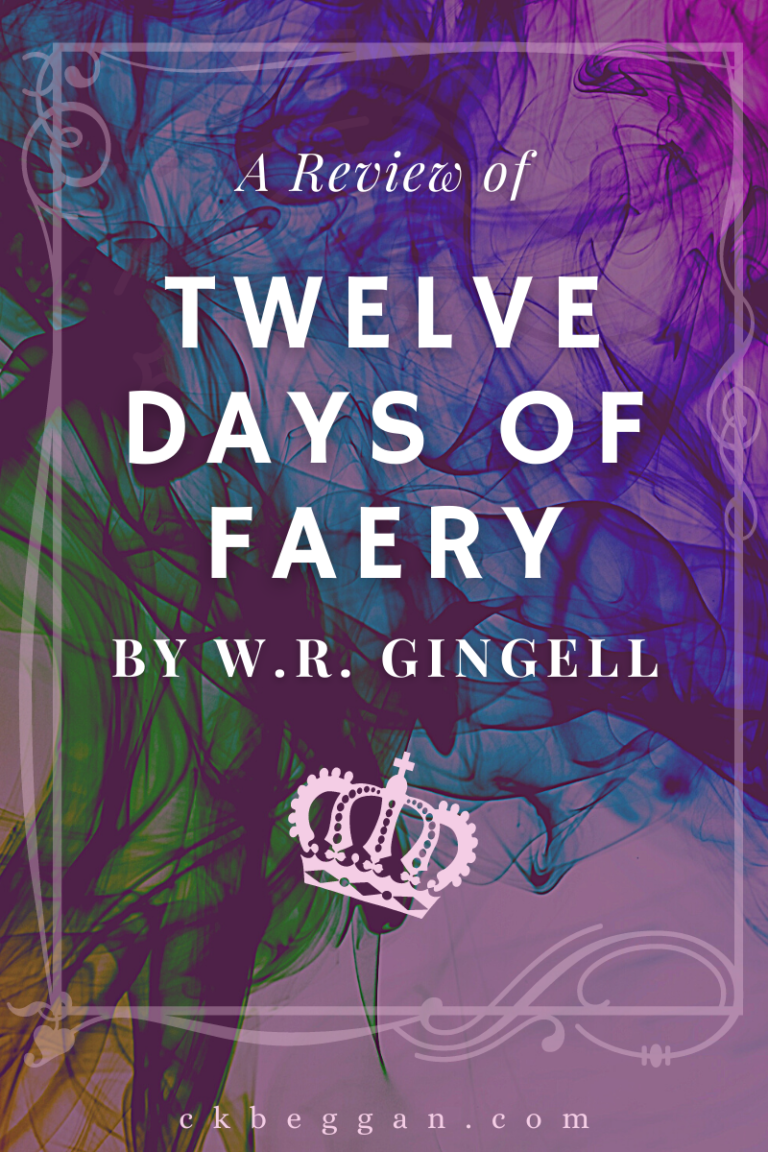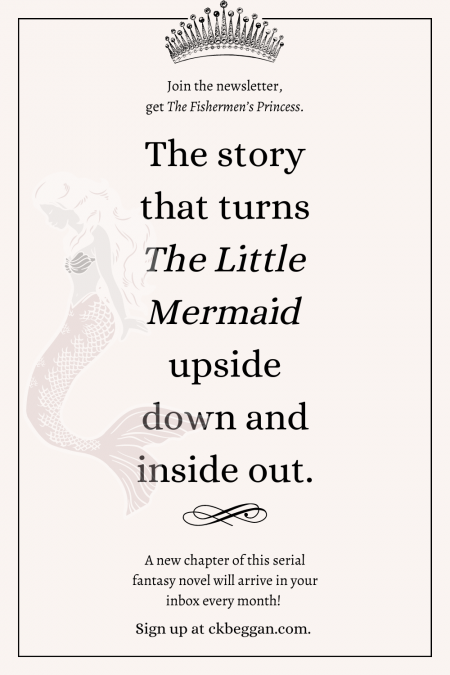Today’s Indie Book Spotlight lands on a retelling of one of my very favorite tales…
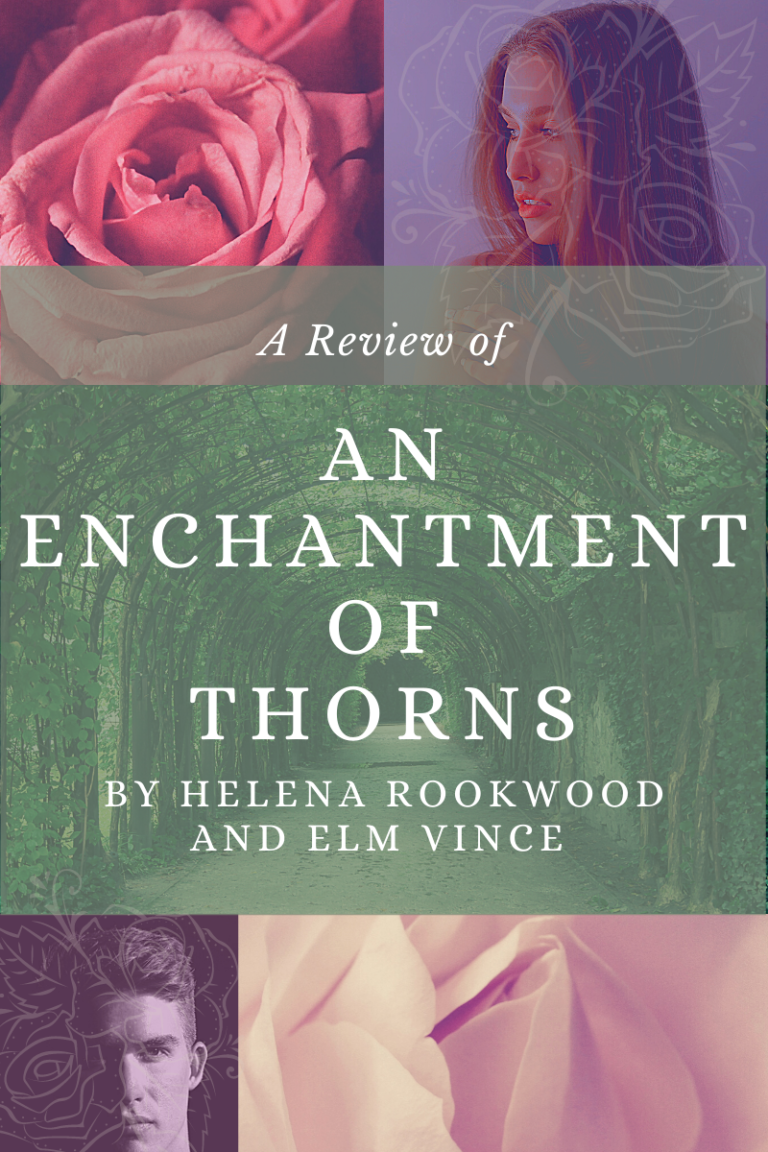
Note: I received a free advanced review copy in exchange for an honest review.
Holy mackerel! I love this book.
In all seriousness, this retelling of Beauty and the Beast was everything I could have asked for. For one thing, the magic has been upgraded more than a few levels. The royals of An Enchantment of Thorns are not just people born into the ruling class, but long-limbed, terrifying and impossibly graceful fae who belong to multiple courts throughout the land. But there’s more than one kind of fae in this world, and it’s hard to say which is more dangerous.
Narrator Aster is most familiar with the fae of the Folkwood, which surrounds her home in Rosehill. The Folkwood is a dangerous place, full of wicked tricksters (the small folk) and deadly ones, like the puca who’s been stalking Aster since the day it took her mentor, Sage. There’s also the beast, a fae creature seen once a year at the Tithe (more on the that in a minute).
Haunted by Sage’s death and burdened with replacing her as Rosehill’s only greenwitch, heroine Aster lives her life bottled up, geographically and emotionally. She’s as comfortable in a fight, thanks to her father’s training, as she is nurturing both plants and humans, often doing both in the same day. But she’s not as empowered as she seems. When the local farmers ignore her orders, or when servants in her wealthy half-sister’s household murmur each time Aster visits, there’s nothing Aster can do but suck it up. As her butt-kicking older sister Laurel puts it, Aster isn’t exactly living a complete life.
Roses with thorns
The characters in An Enchantment of Thorns are complex and unique. To break the curse, Aster must drop her prejudices against fae; after 99 years of cursed life, Throne must learn to let go of his. But are the fae to be trusted?
“To Rosehill, you have to be the calm and collected greenwitch who keeps her head in emergencies,” Laurel says, “but I know you, Aster…I know how much you feel.” Those emotions will be the key to Aster’s future and developing her particular human craft. They’re also what lands her at the beast’s Cursed Court, via the annual Tithe.
Once a year, every girl of a certain age must step onto a pathway that forms in the Folkwood. One girl will be chosen, and never seen again; the rest return shaken and almost unable to describe the terrible and beautiful fae lord they’ve just seen. If the people of Rosehill try to resist the Tithe—if even one girl fails to appear—the Folkwood closes in on all the girls, and no one survives. Yet the girls presented at the Tithe are meant to look “pretty and innocent,” with a requisite crown of flowers in their hair. As Aster describes it, “this was not a day for beauty. This was a day for iron and steeled nerves.”
When Aster’s silly half-sister Ava and her friends read one too many fairy tales and want to be chosen, Aster, who is also of age for the Tithe, must intervene. No surprise—though she appears ragged and wearing thorns instead of pretty blooms—the beast picks Aster instead.
It’s hard not to picture the temperamental Disney beast at times, but this one, who goes by Thorne, is more beast after the curse is broken than before (albeit with a really good head of hair). His house is more woodland than palace. Thorne has servants, of course, but they are lesser fae, and include the adorable Mosswhistle, a brownie Aster lures into her service after a few days of torment by the little folk.
And they do torment her: invisible at first, they leave out a beautiful dress full of pins, snatch the heat from a steaming bath the moment she sets foot in it, and never grow tired of laughing at and mocking her. There’s no “be our guest,” sung or stated, in An Enchantment of Thorns.
Aster is an interesting character who makes a great vehicle for the reader; she falls in love slowly and unexpectedly enough that it never feels forced. What makes her interesting is never forced, either: Aster is a young woman with many responsibilities and very few choices. She’s found her calling with plants, but her days aren’t exactly her own.
Aster is young, and lacks the respect Sage had though she must do the same work. Even supportive big sister Laurel, a fighter working for their smuggler father, doesn’t realize just how much there is to Aster. “The Beast should beware if he chooses you at the Tithe this week, what with your arsenal of plants,” she quips. (But also note: at least half of my highlights in this book were Laurel’s lines.)
It’s wonderful to see Astrid gradually become empowered. Best of all, she becomes empowered before she’s swept away by her heart. In this retelling, it isn’t all about falling in love to break a curse.
Dark fairytales
The dullahan makes a chilling appearance in An Enchantment of Thorns, along with barghests and too many pixies, brownies and goblins to count.
There’s so much depth to Thorne’s “beast” character, too, from his sarcasm, goading and irritatingly (for Aster) indirect encouragement, to the despair driving his weather-changing bad moods. He’s neither beastly nor overly handsome, like in some romantic fantasies. Says Aster, “His wild beauty was like a knife to the gut.”
Interestingly, Thorne also takes on the role of mentor. Unlike the selfish beast most of us know from Disney, Throne never appears truly uncaring. He doesn’t appear at her door the first night to try to force her to dinner; he only expects it as a courtesy to a seriously down-on-his-luck Court Fae, and because the other Tithe girls always managed it. He doesn’t forbid her food if she doesn’t eat with him, either. Moody, complicated, humane and ultimately lovable, he’s a beast any smart gal could fall in love with.
Fans of dark fantasy will feel at home reading An Enchantment of Thorns, thanks to the nightmarish curse and the monstrous fae in the Folkwood; there are some truly chilling settings and scenes thanks to both. Fantastical ones, too. But romantics will also love it. And if you’re like me, you will deeply regret not having the next book to read immediately after finishing it.
An Enchantment of Thorns is currently available for pre-order, and will be released on May 6, 2021. To learn more about these indie authors, visit their websites at helenarookwood.com and elmvince.com.
